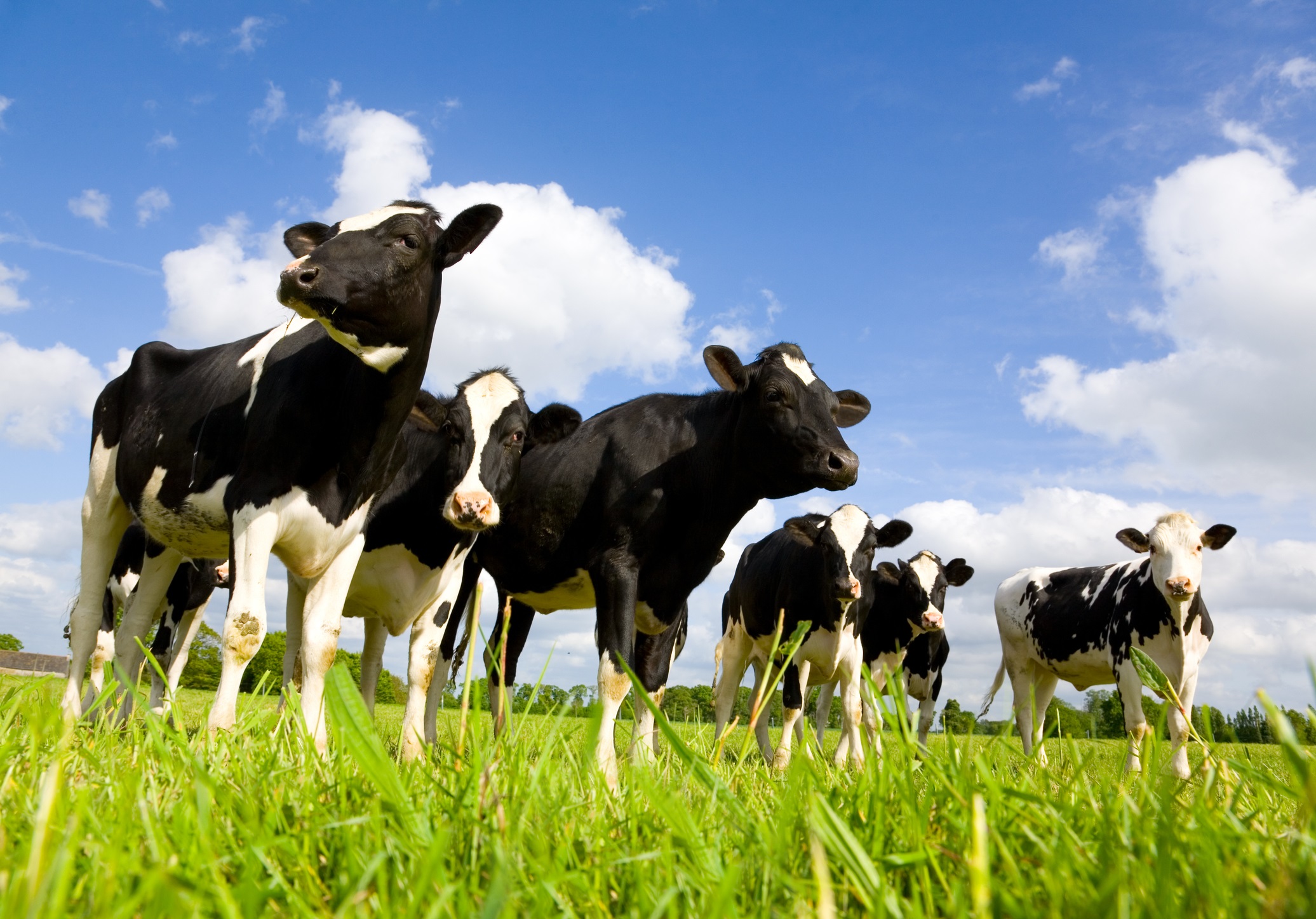
Introduction:
Teat injuries are common in dairy cattle, and, compared with other frequently occurring diseases, these injuries often result in premature culling of affected cows (Beaudeauet al., 1995). Teat injuries can be divided into two categories (externalor internal injuries). All the different types of injuries/diseases, diagnostic approaches, and therapies have been thoroughly described (Couture and Mulon, 2005). This article focuses only on teat lacerations (external injury). Teat lacerations are viewed as catastrophic injuries for the survival of cow within the herd. Many people do not realize that when treated appropriately and promptly, it is possible to repair the teat and keep the animal in full production. Teat lacerations can be challenging to repair, but with the appropriate knowledge and material, a practitioner can be very successful at it.
Not all lacerations are the same. Different prognoses are associated with different types of lacerations. A classification of the laceration with regard to the duration, the conformation, the localization, and the thickness are presented.
Classification
Teat lacerations are classified according to the duration from time of trauma, the localization and conformation of the laceration, and the thicknessof the lesion (full or partial thickness).
Duration
Teat lacerations are categorized as acute or chronic (more than 12 hoursold). Surgical intervention on the teat is best performed during the first12 hours after the injury (Steineret al., 2004; Couture and Mulon, 2005). Later, swelling of the teat can be too severe to permit adequate reconstruction of the tissue. These injuries benefit from medical therapy (hydrotherapy and a nonsteroidal anti-inflammatory drug)(NSAID) before attempting primary closure of the defect (delayed first intention healing). However, with complex lacerations (inverted “Y” or “U”), it is recommended to try primary closure even if the laceration is older than 12 hours. The repair may partially dehisce, but the portion that heals will facilitate the surgical revision performed later in the healing process.
Localization and conformation
Teat lacerations are classified as simple or complex (inverted “Y” or “U”), longitudinal or transverse, and proximal or distal. The orientation of the blood supply of the teat is longitudinal. A transverse laceration results in more damage to the blood supply resulting in more oedema, avascularnecrosis, and dehiscence postoperatively compared with a longitudinal laceration. The more circumference involved, the worse is the prognosis. Distal injuries involving the streak canal are also regarded as having a poor prognosis. Reconstruction of the streak canal is difficult and can cause partial or complete milk flow obstruction. Injury to the distal end of the teat compromises the defence mechanisms of the quarter against mastitis making the animal at higher risk for clinical or subclinical mastitis. Finally, distalinjuries may lead to avascular necrosis of the distal end of the teat (Steineret al., 2004).
Thickness
Teat lacerations are classified as being partial thickness (skin to submucosa)or full thickness (skin to mucosa with milk leaking out of the incision). With full-thickness lesions, the defence mechanisms of the teat against mastitis are bypassed, increasing the risk of clinical mastitis. Prompt surgical reconstruction of the injured tissue is needed to protect the quarter against environmental pathogens (Dyceet al., 1996). In cases of incomplete lacerations(when the integrity of the teat cistern has not been compromised), surgical intervention may not be necessary. In that situation, secondary healing by medical management of the wound may be sufficient.
Preoperative therapy
All teat laceration surgeries are considered severely contaminated. Cold hydrotherapy on the injured teat is recommended prior to any surgical interventions, which helps decrease the inflammation and helps clean the teat for surgery. Before surgery, the cow is given a preoperative dose of antibiotic(procaine penicillin 22,000 IU/kg intramuscularly twice a day) and an NSAID (flunixinmeglumine 1 mg/kg intravenously). The surgery can be performed in lateral or dorsal recumbency. Lateralrecumbencyis preferred because it decreases bloating on animals that have not been fasting. However, dorsal recumbency decreases milk contamination improving the view of the surgical field. A clean area that will allow tying the animal’s leg and that will provide sufficient lighting is selected. A combination of drugs (neuroleptanalgesia) is preferred rather than using only an alpha-2 agonist that worsens bloating in ruminants. A combination ofxylazine (0.02 mg/kg), ketamine (0.04 mg/kg), and butorphanol (0.01 mg/kg) is given IV or IM.
Nervous animals can be given higher doses of ketamine (up to 2 mg/kgIM) during surgery. The animal is then cast down, and the legs and head are tied. The side on which the animal will lie is selected according to the location of the laceration. The mammary gland is shaved, cleaned, and scrubbed. A local block is performed with 2% lidocaine HCL. A ‘‘V’’ block or a ring block is performed at the base of the teat. The teat cistern can be infused with lidocaine to anesthetize the mucosa.
Surgery
Surgical materials
A scalpel handle and a number 10 surgical blade are needed for debridement. A small-size Metzenbaum is appropriate to trim necrotic or redundant tissue. An Adson or Brown-Adson thumb forceps is needed for careful manipulation of the tissue. Using forceps with teeth at the tip causes less trauma than atraumatic forceps (DeBakey or Cooley), which crunch the tissue on a greater surface during manipulation (Bailey, 2006). If possible, the tissue should not be manipulated with forceps at all. A small-size needle holder and a regular-size mayo scissor should be part of the teat surgery kit.
A teat cannula, a syringe and some flushing solution should be available. Absorbable suture material of size 3.0 to 4.0 mounted on an atraumatic needle should be available for suturing the mucosa and the subcutaneous layers. Polyglycolic acid or polyglactin 910 are frequently used. When delayed healing is suspected or when clinical mastitis is present,a slow absorbable monofilament like polydioxanone may be more appropriate. Nonabsorbable monofilament of size 2.0 should be available to close the skin.
Wound debridement
The wound is carefully but aggressively debrided and lavaged. All the necrotic tissue is removed by scraping the tissue with a scalpel blade untilviable tissue is exposed (pink and diffuse bleeding of the tissue). The margin of the skin may need to be trimmed using the scalpel blade or scissors.
Laceration repair
If involved, the mucosa and the submucosa are first reconstructed. A linear defect is reconstructed using a simple continuous pattern with a synthetic absorbable suture material of size 3.0 or 4.0 mounted ona swedged-on atraumatic needle (Grymeret al., 1984; Makadyet al., 1991; Ghamsariet al., 1995). With complex configurations, a simple interrupted pattern may be used. If delayed healing is suspected(extensive transverse laceration, mastitis), a slow-resorbing monofilament suture (PDS II) is the preferred material to use (Nichols and Anderson, 2007).
The muscular and subcutaneous layers are closed with a simple continuous pattern with a synthetic absorbable suture material of size 3.0 or 4.0 (Grymeret al., 1984; Makadyet al., 1991; Ghamsariet al., 1995). With large skin flaps, it is recommended to place some walking sutures (Fig. 1) to decrease dead space. However, doing so will increase the surgical time and the foreign material and may compromise the vascularization of the teat. Care must be taken to place only what is necessary to hold the flap safely. The skin is carefully apposed with 2.0 synthetic nonabsorbable monofilament suture material using a simple interrupted or cruciate pattern(Grymeret al., 1984; Makadyet al., 1991; Ghamsariet al., 1995). Care is taken to leave the skin sutures slightly loose because swelling is expected at the surgery site. When severe postoperative oedema is suspected (transverse or chronic laceration), vertical or horizontal mattress sutures around or through stenting material (IV drop set) can be used to decrease the risk of wound dehiscence. With complex lacerations, a “V” flap will need to be sutured. However, dehiscence of the tip of the flap often occurs. A corner suture or a three-point buried mattress suture can be placed (Bailey, 2006).

Throughout the procedure, the surgery site is lavaged frequently with saline. Antibiotics (cefazolin (1 g/L)) can be added to the lavage solution. Hemostasis is performed to avoid the formation of mural hematoma that may obstruct the teat cistern during machine milking. Chromic catgut is not recommended in teat surgery because of the enzymatic reaction associated with its degradation.
Postoperative care
The wound is protected with a teat bandage, and the quarter is treated appropriately for mastitis. An NSAID (flunixinmeglumine 1 mg/kg IV, once a day for 3 days) and antimicrobials (procaine penicillin 22,000 IU/kgIM twice a day for 3 days) should be continued postoperatively. Depending on the severity of the lesion and the structures involved, milking with the machine may or may not be used at the following milking. A larger teat cup is recommended if a machine is used. Hand milking should be avoided because it is associated with wound dehiscence. If the machine is not used,a cannula is introduced carefully at every milking. When the streak canal is involved in the laceration, a cannula with a lid can be left in the streak canal for a few days (no more than 3 days). When the cannula is removed, a natural teat insert (wax implant) can be placed in the streak canal between milkings. It will promote the healing of the damaged streak canal. Severe postoperative oedema can be treated by applying ice around the teat for a few days. The skin sutures are removed no more than 9 days after the surgery. If the sutures are left in place longer, excessive fibrosis and suture tract infection may occur (Couture and Mulon, 2005).
Complications and prognosis
Complications after surgical reconstruction of a teat laceration are wound dehiscence, fistula formation, mural abscess, teat cistern fibrosis, and mastitis (Ducharme1987a,b). If dehiscence occurs, the teat should be allowed to heal by second intention before attempting to repair. A fistula should be closed after complete healing of the laceration. The dimension of the fistula will decrease, and the surgery will be performed on healthy tissue. A mural abscess can be diagnosed with an ultrasound scan. If small, it can be removed ‘‘en bloc’’ or it can be lanced and allowed to heal by the second intention. If the mucosa of the teat cistern cannot be closed, fibrosis of the cistern will occur. In this situation, a silicone implant can be placed in the cistern to avoid adhesion formation during the healing of the mucosa. Finally, especially when the distal end of the teat is involved (loss of the protective mechanisms against mastitis), clinical mastitis can become evident after teat laceration repair. Frequentmilking and antibiotic therapy should be started. If possible, bacterial culture and antibiotic sensitivity should be performed.
Summary
Prompt surgery, aggressive debridement, careful reconstruction of the tissue, judicious use of suture materials, and appropriate postoperative therapy and monitoring are all key points to be successful in teat laceration surgery.
Authors:

Urfeya Mirza1, Uiase Bin Farooq2
Department of Veterinary Surgery and Radiology
1Khalsa College of Veterinary and Animal Sciences, Amritsar
2M.R. College of Veterinary and Animal Sciences, Haryana

















